A microRNA superfamily regulates nucleotide binding site-leucine-rich repeats and other mRNAs
- PMID: 22408077
- PMCID: PMC3336131
- DOI: 10.1105/tpc.111.095380
A microRNA superfamily regulates nucleotide binding site-leucine-rich repeats and other mRNAs
Erratum in
-
CORRECTION.Plant Cell. 2019 Jul;31(7):1665-1668. doi: 10.1105/tpc.19.00251. Epub 2019 May 13. Plant Cell. 2019. PMID: 31085581 Free PMC article. No abstract available.
Abstract
Analysis of tomato (Solanum lycopersicum) small RNA data sets revealed the presence of a regulatory cascade affecting disease resistance. The initiators of the cascade are microRNA members of an unusually diverse superfamily in which miR482 and miR2118 are prominent members. Members of this superfamily are variable in sequence and abundance in different species, but all variants target the coding sequence for the P-loop motif in the mRNA sequences for disease resistance proteins with nucleotide binding site (NBS) and leucine-rich repeat (LRR) motifs. We confirm, using transient expression in Nicotiana benthamiana, that miR482 targets mRNAs for NBS-LRR disease resistance proteins with coiled-coil domains at their N terminus. The targeting causes mRNA decay and production of secondary siRNAs in a manner that depends on RNA-dependent RNA polymerase 6. At least one of these secondary siRNAs targets other mRNAs of a defense-related protein. The miR482-mediated silencing cascade is suppressed in plants infected with viruses or bacteria so that expression of mRNAs with miR482 or secondary siRNA target sequences is increased. We propose that this process allows pathogen-inducible expression of NBS-LRR proteins and that it contributes to a novel layer of defense against pathogen attack.
Figures
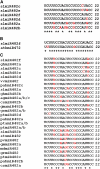
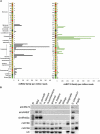
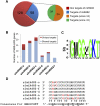
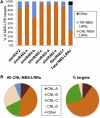


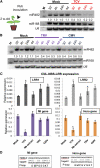
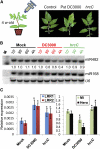
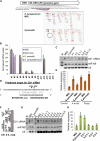
Comment in
-
A microRNA cascade in plant defense.Plant Cell. 2012 Mar;24(3):840. doi: 10.1105/tpc.112.240311. Epub 2012 Mar 16. Plant Cell. 2012. PMID: 22427338 Free PMC article. No abstract available.
Similar articles
-
Overexpression of potato miR482e enhanced plant sensitivity to Verticillium dahliae infection.J Integr Plant Biol. 2015 Dec;57(12):1078-88. doi: 10.1111/jipb.12348. Epub 2015 Apr 24. J Integr Plant Biol. 2015. PMID: 25735453
-
Expression profiling across wild and cultivated tomatoes supports the relevance of early miR482/2118 suppression for Phytophthora resistance.Proc Biol Sci. 2018 Feb 28;285(1873):20172560. doi: 10.1098/rspb.2017.2560. Proc Biol Sci. 2018. PMID: 29491170 Free PMC article.
-
Extensive Families of miRNAs and PHAS Loci in Norway Spruce Demonstrate the Origins of Complex phasiRNA Networks in Seed Plants.Mol Biol Evol. 2015 Nov;32(11):2905-18. doi: 10.1093/molbev/msv164. Epub 2015 Aug 28. Mol Biol Evol. 2015. PMID: 26318183 Free PMC article.
-
The role of microRNAs in NBS-LRR gene expression and its implications for plant immunity and crop development.Transgenic Res. 2024 Aug;33(4):159-174. doi: 10.1007/s11248-024-00387-9. Epub 2024 Jun 10. Transgenic Res. 2024. PMID: 38856866 Review.
-
MicroRNA482/2118, a miRNA superfamily essential for both disease resistance and plant development.New Phytol. 2022 Mar;233(5):2047-2057. doi: 10.1111/nph.17853. Epub 2021 Nov 29. New Phytol. 2022. PMID: 34761409 Review.
Cited by
-
Pepper Plants Harboring L Resistance Alleles Showed Tolerance toward Manifestations of Tomato Brown Rugose Fruit Virus Disease.Plants (Basel). 2022 Sep 12;11(18):2378. doi: 10.3390/plants11182378. Plants (Basel). 2022. PMID: 36145781 Free PMC article.
-
Phased, secondary, small interfering RNAs in posttranscriptional regulatory networks.Plant Cell. 2013 Jul;25(7):2400-15. doi: 10.1105/tpc.113.114652. Epub 2013 Jul 23. Plant Cell. 2013. PMID: 23881411 Free PMC article. Review.
-
A microRNA cascade in plant defense.Plant Cell. 2012 Mar;24(3):840. doi: 10.1105/tpc.112.240311. Epub 2012 Mar 16. Plant Cell. 2012. PMID: 22427338 Free PMC article. No abstract available.
-
Integrative mRNA and microRNA Analysis Exploring the Inducing Effect and Mechanism of Diallyl Trisulfide (DATS) on Potato against Late Blight.Int J Mol Sci. 2023 Feb 9;24(4):3474. doi: 10.3390/ijms24043474. Int J Mol Sci. 2023. PMID: 36834885 Free PMC article.
-
The sly-miR166-SlyHB module acts as a susceptibility factor during ToLCNDV infection.Theor Appl Genet. 2022 Jan;135(1):233-242. doi: 10.1007/s00122-021-03962-4. Epub 2021 Oct 12. Theor Appl Genet. 2022. PMID: 34636959
References
Publication types
MeSH terms
Substances
Associated data
- Actions
Grants and funding
LinkOut - more resources
Full Text Sources
Molecular Biology Databases
Research Materials
Miscellaneous

